3-(Methylthio)propionic acid
Modify Date: 2024-01-01 18:27:01
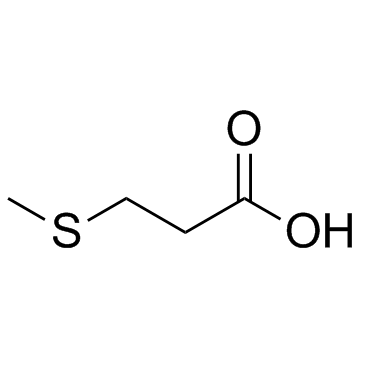
3-(Methylthio)propionic acid structure
|
Common Name | 3-(Methylthio)propionic acid | ||
|---|---|---|---|---|
| CAS Number | 646-01-5 | Molecular Weight | 120.17 | |
| Density | 1.16 | Boiling Point | 130ºC 2mm | |
| Molecular Formula | C4H8O2S | Melting Point | 16ºC | |
| MSDS | N/A | Flash Point | 130°C/15mm | |
Use of 3-(Methylthio)propionic acid3-(Methylthio)propionic acid is an intermediate in the methionine metabolism. |
| Name | 3-(methylthio)propionic acid |
|---|---|
| Synonym | More Synonyms |
| Description | 3-(Methylthio)propionic acid is an intermediate in the methionine metabolism. |
|---|---|
| Related Catalog | |
| In Vitro | Methionine has consistently been shown to be the most toxic amino acid in experiments devised to assess the relative toxicity of dietary amino acids. 3-methylthiopropionate is an intermediate in methionine catabolism in rat and monkey liver in vitro. This pathway appears to account for a major portion of methionine oxidation in vitro[1]. Cultures of Streptomyces lincolnensis accumulated 3-methylthioacrylic acid in amounts directly related to the concentration of methionine in the medium. The first intermediate in the pathway may be the keto acid, which is then oxidatively decarboxylated to 3-methylthiopropionic acid[2]. The purified 3-MTPA has antifungal activity in assays using F. oxysporum as a model fungus. Daily measurements of shoot and root length shows severe inhibition of seed germination and root and shoot development at concentrations above 12mg for partially purified extracts[3]. 3-methylthiopropionic acid ethyl ester possesses potential anticarcinogenic properties by inducing differentiation in well-differentiated colon cancer cells. Treatment of RCM-1 cells for 4 days with 3-methylthiopropionic acid ethyl ester between the doses of 0.25 and 2 mM progressively increases the percent area occupied by duct structures relative to the control, and also induces an increase in the number and the maximum diameter of the ducts in each culture plate[4]. |
| Cell Assay | RCM-1 cells are each plated into 35-mm plastic culture plates. Twenty-four hours after plating, cells are treated with 3-methylthiopropionic acid ethyl ester in 2 mL of 10% FBS-RPMI+F12 for 4 days, and are counted by using a hemacytometer, after trypsinization with 0.25% trypsin and 1 mM EDTA[4]. |
| References |
| Density | 1.16 |
|---|---|
| Boiling Point | 130ºC 2mm |
| Melting Point | 16ºC |
| Molecular Formula | C4H8O2S |
| Molecular Weight | 120.17 |
| Flash Point | 130°C/15mm |
| PSA | 52.32000 |
| LogP | 1.67190 |
| Index of Refraction | 1.4884 |
| Risk Phrases | R34 |
|---|---|
| Safety Phrases | S26-S36/37/39-S45 |
| RIDADR | UN 3265 |
| Packaging Group | II |
| Hazard Class | 8.0 |
| HS Code | 2930909090 |
| Precursor 10 | |
|---|---|
| DownStream 10 | |
| HS Code | 2930909090 |
|---|---|
| Summary | 2930909090. other organo-sulphur compounds. VAT:17.0%. Tax rebate rate:13.0%. . MFN tariff:6.5%. General tariff:30.0% |
| MFCD00059635 |
| 3-methylsulfanylpropanoic acid |
| 3-Methylmercaptopropionic Acid |
| EINECS 211-460-9 |
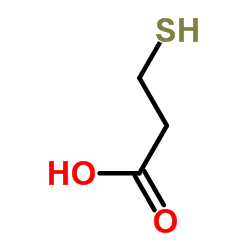 CAS#:107-96-0
CAS#:107-96-0 CAS#:74-88-4
CAS#:74-88-4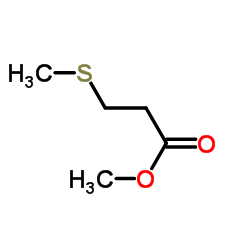 CAS#:13532-18-8
CAS#:13532-18-8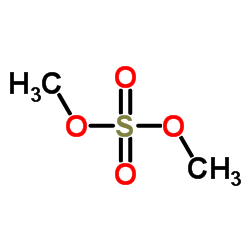 CAS#:77-78-1
CAS#:77-78-1 CAS#:868-84-8
CAS#:868-84-8 CAS#:79-10-7
CAS#:79-10-7 CAS#:41320-26-7
CAS#:41320-26-7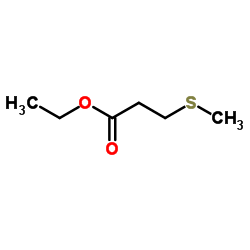 CAS#:13327-56-5
CAS#:13327-56-5 CAS#:54974-63-9
CAS#:54974-63-9 CAS#:74-93-1
CAS#:74-93-1 CAS#:106520-77-8
CAS#:106520-77-8 CAS#:14090-85-8
CAS#:14090-85-8 CAS#:75-18-3
CAS#:75-18-3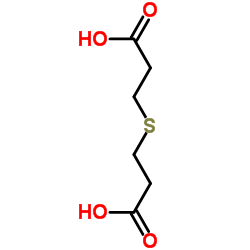 CAS#:111-17-1
CAS#:111-17-1 CAS#:4938-00-5
CAS#:4938-00-5 CAS#:7031-23-4
CAS#:7031-23-4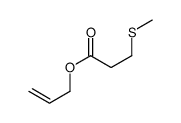 CAS#:827340-77-2
CAS#:827340-77-2